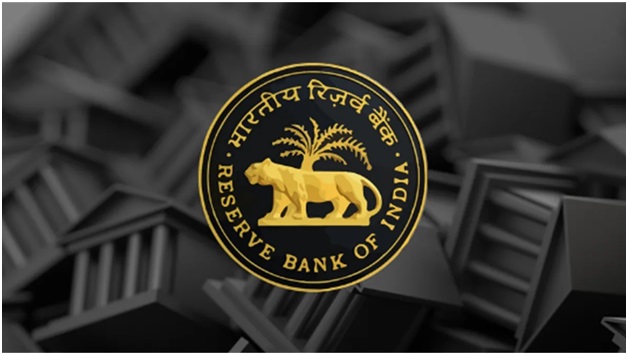Non-performing Assets (NPAs) and Wilful Defaulters (Indian Express)

- 23 Sep 2023
Why is it in News?
The Reserve Bank of India (RBI) has put forth a proposal that requires lenders to categorize a borrower as a "wilful defaulter" within six months of their account being declared a non-performing asset (NPA). Previously, the RBI did not have a specific timeframe for identifying such borrowers.
Context:
- The RBI defines wilful defaulters as individuals or entities that have the means to repay a bank's dues but deliberately do not, or divert bank funds.
- A "large defaulter" refers to someone with outstanding dues of Rs 1 crore or more, whose account has been categorized as doubtful or a loss.
- A "wilful defaulter" is a borrower or guarantor who has committed wilful default, with an outstanding amount of Rs 25 lakh or more.
According to the RBI's draft guidelines:
- Lenders must assess the "wilful default" aspect for all accounts with outstanding amounts of Rs 25 lakh and above or as per RBI notifications.
- The process of classifying or declaring a borrower as a wilful defaulter should be completed within six months of the account becoming an NPA.
- An Identification Committee, established by lenders, must scrutinize evidence of wilful default.
- Lenders must investigate the wilful default aspect thoroughly before transferring the credit facility to other lenders or asset reconstruction companies (ARCs).
Other aspects of the RBI's draft guidelines include:
- No additional credit facility should be extended by any lender to a wilful defaulter or any entity associated with them.
- This prohibition on additional credit lasts for up to one year after the wilful defaulter's name is removed from the List of Wilful Defaulters (LWD) by the lenders.
- Wilful defaulters are ineligible for credit facility restructuring.
- These guideline revisions come after reviewing instructions and considering various judgments and orders from the Supreme Court and High Courts.
What is Non-Performing Assets (NPAs)?
- Non-Performing Assets, often referred to as NPAs, represent loans or advances for which the principal or interest payments have remained overdue for a period of 90 days or more.
- For banks, loans are considered assets because the interest they generate is a significant source of income.
- However, when customers, whether individuals or corporations, are unable to make interest payments, these assets become "non-performing" for the bank as they cease to generate income.
- Therefore, the RBI defines NPAs as assets that no longer generate income for banks. Banks are required to disclose their NPA figures to the public and report them to the RBI periodically.
- Classification of Assets: According to RBI guidelines, banks must further categorize NPAs into three types:
- Substandard assets: These are assets that have been NPAs for less than or equal to 12 months.
- Doubtful assets: Assets that have remained in the substandard category for 12 months.
- Loss assets: These are considered uncollectible and of such minimal value that keeping them as bankable assets is not justified, although some minimal recovery value may exist.
- NPA Provisioning: Provisioning for a loan refers to setting aside a certain percentage of the loan amount as a reserve. The standard rate of provisioning in Indian banks ranges from 5-20%, depending on the business sector and the borrower's repayment capacity. However, in the case of NPAs, 100% provisioning is required in accordance with Basel-III norms.
- GNPA and NNPA: Two key metrics help us understand a bank's NPA situation.
- GNPA (Gross Non-Performing Assets) represents the total value of gross NPAs a bank has in a specific quarter or financial year.
- NNPA (Net Non-Performing Assets) subtracts the provisions made by the bank from the gross NPA, providing the exact value of NPAs after specific provisions.
- NPA Ratios: NPAs can also be expressed as percentages of total advances, indicating the proportion of advances that are not recoverable.
- For instance:
- GNPA ratio is the ratio of the total GNPA to the total advances.
- NNPA ratio uses net NPA to calculate the ratio to the total advances.
Impact of NPAs and the Current Situation with Future Projections for India:
- Effects of NPAs: Banks face a shortage of funds for lending to other productive sectors in the economy.
- To maintain their profit margins, banks may need to raise interest rates.
- Reduced investments could lead to an increase in unemployment rates.
- Banks have the option to retain NPAs in their books with hopes of recovery, make provisions for them, or write off the loans entirely as bad debt.
- Present State of NPAs in India: According to the latest RBI Financial Stability Report, the gross NPA ratio of scheduled commercial banks (SCBs) reached a 10-year low of 3.9% in March 2023.
- Both gross and net NPA ratios have declined significantly from their peak levels of 11.5% and 6.1% in March 2018 to 3.9% and 1.0% in March 2023, respectively.
- A contributing factor to the reduction in gross NPAs in 2022-23 was the substantial write-offs undertaken by banks.
- Future Projection for India: Based on stress test results, it is anticipated that the GNPA ratio for all SCBs may improve to 3.6% by March 2024.
- However, in the event of a deterioration in the macroeconomic environment, leading to medium or severe stress scenarios, the GNPA ratio could potentially rise to 4.1% and 5.1%, respectively.
Mains Question:
- Evaluate the impact of rising NPAs on the Indian economy, including effects on bank lending, interest rates, and employment. Elucidate the current NPAs situation in India and discuss future projections in light of recent trends. (10M)
